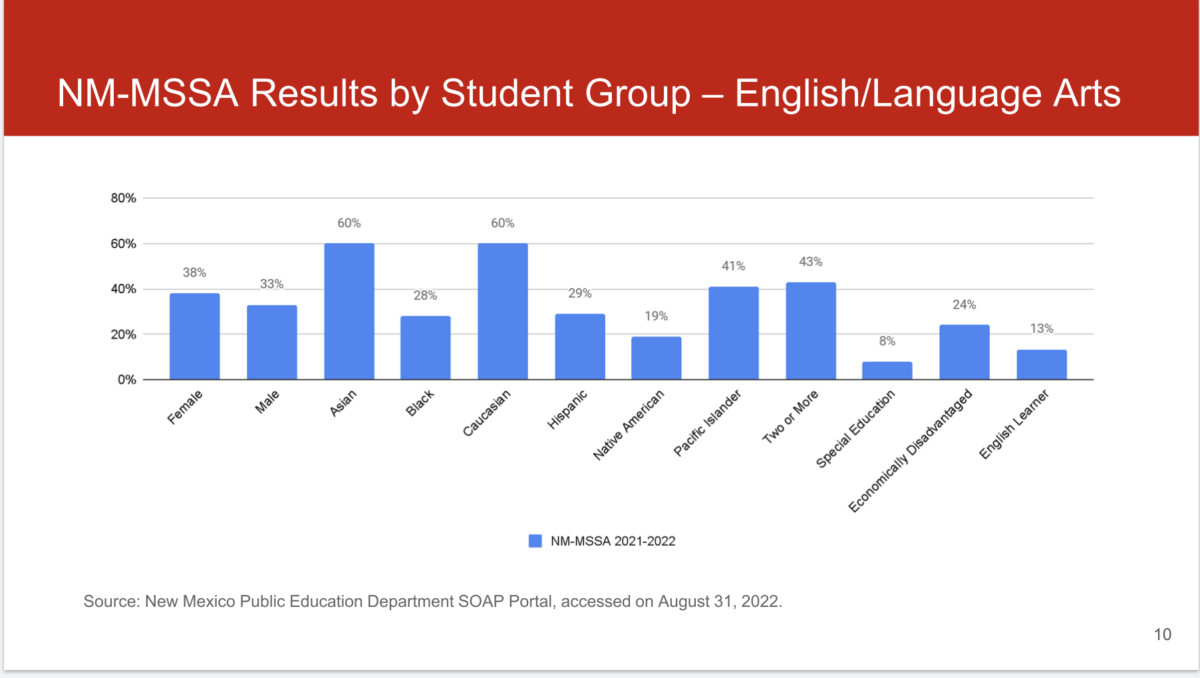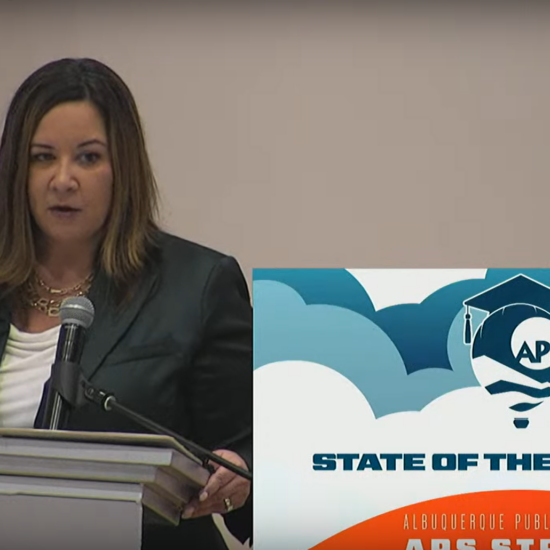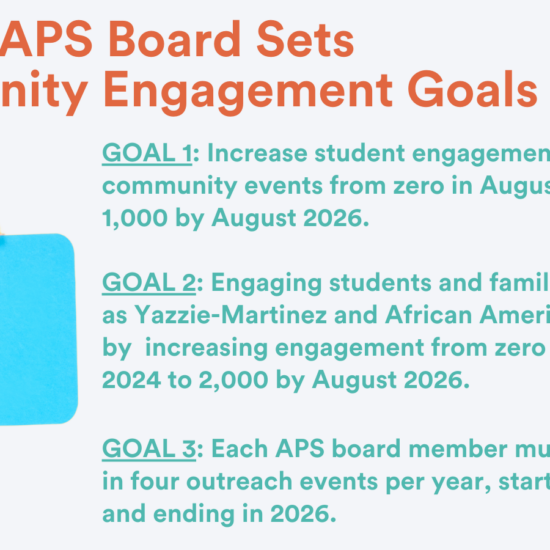
The first state test results in three years show that many Albuquerque Public Schools students emerged from Covid-19 learning disruptions facing a long climb toward grade-level proficiency.
During a lengthy presentation and question and answer session with school board members Sept. 14, APS officials acknowledged the challenges, but also expressed confidence that some new cabinet members and new learning materials will help change the district’s trajectory.
Scores also revealed enormous racial and socioeconomic achievement gaps, with more affluent students as well as Asian and white students scoring significantly higher on literacy and math assessments than low-income students and students of color.
A slide deck presented by senior district officials laid out the data clearly and left little room for misinterpretation. On the new test for students in grades 3-8, the New Mexico Measures of Student Success and Achievement (NM-MSSA), 60 percent of Asian and white students scored at grade level or better on English Language Arts tests, while 19 percent of native American and 29 percent of Hispanic students met that standard.
“It’s (sobering) to actually see these scores,” board member Crystal Tapia-Rommero said. “I’ve heard some of you say these last couple of weeks, that you can’t measure a student completely on test scores, that they don’t measure creativity and if they’re innovative, and I get that, I fully get that. But looking (at these scores) I’m sad. I’m just really, really sad.”
Superintendent Scott Elder, while agreeing the scores left much to be desired, also said no one should be surprised that the first post-pandemic test results were disappointing. “We have a long history of struggling (in) the district and there’s no denying that,” Elder said. “(The pandemic) was a historically unknown situation. Our educators were dealt some tremendously difficult situations. We spent a year online and everyone across the country has been saying that when the first round of scores come out, they’re not going to be very good.”
Despite all that, Elder said “In some ways, I was surprised that some of them were as good as they were, because of all the doom and gloom.”
Elder reiterated the messaging from the New Mexico Public Education Department that scores this year cannot be compared to years past, because the tests are new and not aligned with the PARCC assessments used previously. This year’s scores should be viewed as baseline data, he emphasized.
Tapia-Romero stressed that APS’ struggles predate the pandemic, and said she hopes the district and the community at large will take this opportunity to have tough conversations. “We (the school board) are going to partner with you and support you as much as we can to make sure that we can do for our teachers and for our students,” she said. “But these (results) bring to light some issues that we really haven’t addressed or acknowledged, or been very honest about in a while.”
APS is transparent with its data, offering a robust set of tools online that allow families to view data down to the school level and disaggregated by gender, race, ethnicity, socioeconomic status, and geography. Using the searchable tool for NM-MSSA, it’s possible to see stark differences in student test score results from one section of the city to the other.
In the lower-income Learning Zone 2 in the city’s southwestern quadrant, for example, no grade level 3-8 had more than one-quarter of its students score proficient in English Language Arts or even 15 percent of students proficient in math.
In the more affluent Learning Zone 4 in the northeast quadrant, proficiency hovered near 50 percent in ELA at all grade levels, and between 34 and 45 percent in math. Those aren’t great numbers, but the contrast between zones 2 and 4 are notable.
It’s notable that low-income students in the more affluent Zone 4 schools did far better on the tests than their peers in Zone 2. Almost one-third of Zone 4 students who qualified for federally subsidized lunches scored proficient in ELA, and 21 percent were proficient in math. In Zone 2 however, just 20 percent of students were proficient in ELA and 11 percent in math.
Board President Yolanda Montoya-Cordova said APS has suffered in recent years from “not having strong tools, resources, or a strong math instructional piece or framework to follow.” New curriculum and some new people in senior leadership positions could make a big difference, she said.
One of the newcomers is Channell Segura, the former superintendent in Truth or Consequences who joined APS this summer as chief of schools. She told board members that she will be focusing much of her attention on three issues: attendance, achievement, and attainment (on-time graduation).
She said attendance is vitally important and she will require every school to develop an attendance plan. By achievement, she said, she means “our teachers are teaching grade-level standards and utilizing high-yield strategies so that students from all subgroups can access those standards.”







